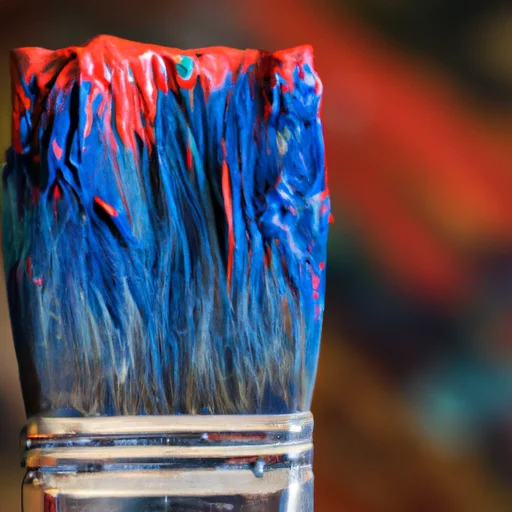So you’ve finally decided to give your home a fresh coat of paint, but have you ever wondered which colors are the most challenging to cover up? From vibrant reds to deep navy blues, certain hues can be downright stubborn when it comes to painting over them. In this article, we’ll explore the world of challenging colors and uncover the secrets to successfully transforming your walls.
What Are The Hardest Colors To Paint Over?
Whether you’re a DIY enthusiast or planning to hire a professional, knowing which shades may require extra effort will save you time, money, and frustration. So grab a paintbrush and get ready to conquer those tricky colors!
Table of Contents
Introduction
When it comes to painting, choosing the right color is crucial. However, what many people fail to realize is that certain colors can be particularly challenging to paint over. Whether you’re looking to change the look of a room or cover up an existing paint job, understanding the factors that affect paint coverage and being aware of the hardest colors to paint over can save you time, effort, and frustration. In this article, we will explore the various factors that influence paint coverage and delve into the specific colors that can be particularly difficult to paint over.
Factors Affecting Paint Coverage
Before we dive into the specific colors that pose challenges when it comes to painting, it’s important to understand the factors that affect paint coverage overall. These factors can vary depending on the type of surface you’re working with, the quality of paint you’re using, and the techniques you employ. Here are a few key factors to consider:
Surface Texture
The texture of the surface you’re painting plays a significant role in paint coverage. Rough surfaces such as brick or textured wallpaper can absorb more paint, requiring additional coats to achieve a uniform finish. On the other hand, smooth surfaces like glass or metal may require fewer coats as the paint adheres more easily.
Paint Quality
The quality of paint you choose can greatly influence how well it covers a particular color. Higher-quality paints often have better pigmentation, which means they can provide better coverage in fewer coats. Cheaper paints, on the other hand, may require multiple applications to achieve the desired result.
Paint Color
While it may seem counterintuitive, the color of the paint you’re trying to cover can affect paint coverage. Darker and bolder colors, such as reds, blacks, and blues, tend to require more coats to achieve full coverage, compared to lighter shades. The underlying color beneath the new coat can influence the final result, making it more challenging to achieve a uniform finish.
Preparation and Technique
Proper preparation and painting techniques are essential for achieving optimal paint coverage. Thoroughly cleaning and sanding the surface, using a primer if necessary, and employing proper brush or roller techniques can ensure better coverage and reduce the number of coats required.
Dark Colors
Dark colors are often among the most challenging to paint over. Their deep pigmentation and high contrast can make it difficult to achieve a smooth, even finish. Some of the hardest dark colors to paint over are:
Red
Red is notorious for requiring multiple coats to cover effectively. Its intense pigmentation can bleed through lighter paints, resulting in a patchy finish if not properly concealed. Using a high-quality primer specifically designed to block the underlying color can help minimize this issue.
Black
Black is another color that poses a significant challenge when it comes to paint coverage. Its darkness can make it difficult to completely cover, often resulting in shadowing or streaks. To achieve a smooth, consistent finish when painting over black, priming the surface before applying the new color is essential.
Blue
Blue, especially darker shades, can also be difficult to cover. Similar to black, the deep pigmentation of blue paint can lead to uneven coverage and streaking. Utilizing a tinted primer or optinży for a paint formulation specifically designed to cover dark shades of blue can improve the end result.
Bold Colors
In addition to dark colors, certain bold colors can make the process of painting over them a bit more challenging. Some specific bold colors that may require extra attention are:
Yellow
Yellow is a bold color that can be challenging to paint over due to its vibrancy. The brightness of yellow can bleed through lighter paint colors, resulting in an uneven and less desirable finish. Applying a high-quality primer or using a paint with excellent coverage can help mitigate this issue.
Green
Green, particularly rich and deep shades, can present difficulties in achieving full coverage. Its pigmentation can cause streaks and unevenness, especially when transitioning from a lighter to a darker color. Using a primer specifically formulated for green paint can help achieve a more uniform finish.
Purple
Purple is a bold color that can present challenges when it comes to paint coverage. Its hues can be difficult to completely cover, often requiring multiple coats for a uniform finish. Using a primer tailored for purple or opting for higher-quality paint with superior pigmentation can help overcome this obstacle.

Other Challenging Colors
While dark and bold colors are known for their paint coverage challenges, there are a few other colors worth mentioning:
Orange
Orange, especially brighter tones, can be difficult to cover completely. Its vibrant pigmentation can easily bleed through lighter colors, resulting in an uneven or splotchy appearance. To combat this, using a primer specifically formulated for orange paints can make a significant difference.
Brown
Brown is another color that can be hard to paint over effectively. Its rich pigment can be challenging to conceal, often requiring multiple coats to achieve a smooth and uniform finish. Employing a high-quality primer designed for brown paints can help minimize the number of coats required.
Conclusion
Painting over certain colors can be a more daunting task than anticipated. From dark hues like red and black to bold shades like yellow and purple, understanding the challenges of these colors can help you plan accordingly and achieve the desired results. Consider the factors affecting paint coverage, such as surface texture and paint quality, and be prepared to invest the necessary time and effort to ensure a beautiful, uniform finish.
With proper preparation and techniques, even the most challenging colors can be successfully painted over, transforming your space into a vision of beauty.

Upgrade Your Painting Game
Explore our Introduction To The Best Paint Sprayers guide to take your projects to the next level!

